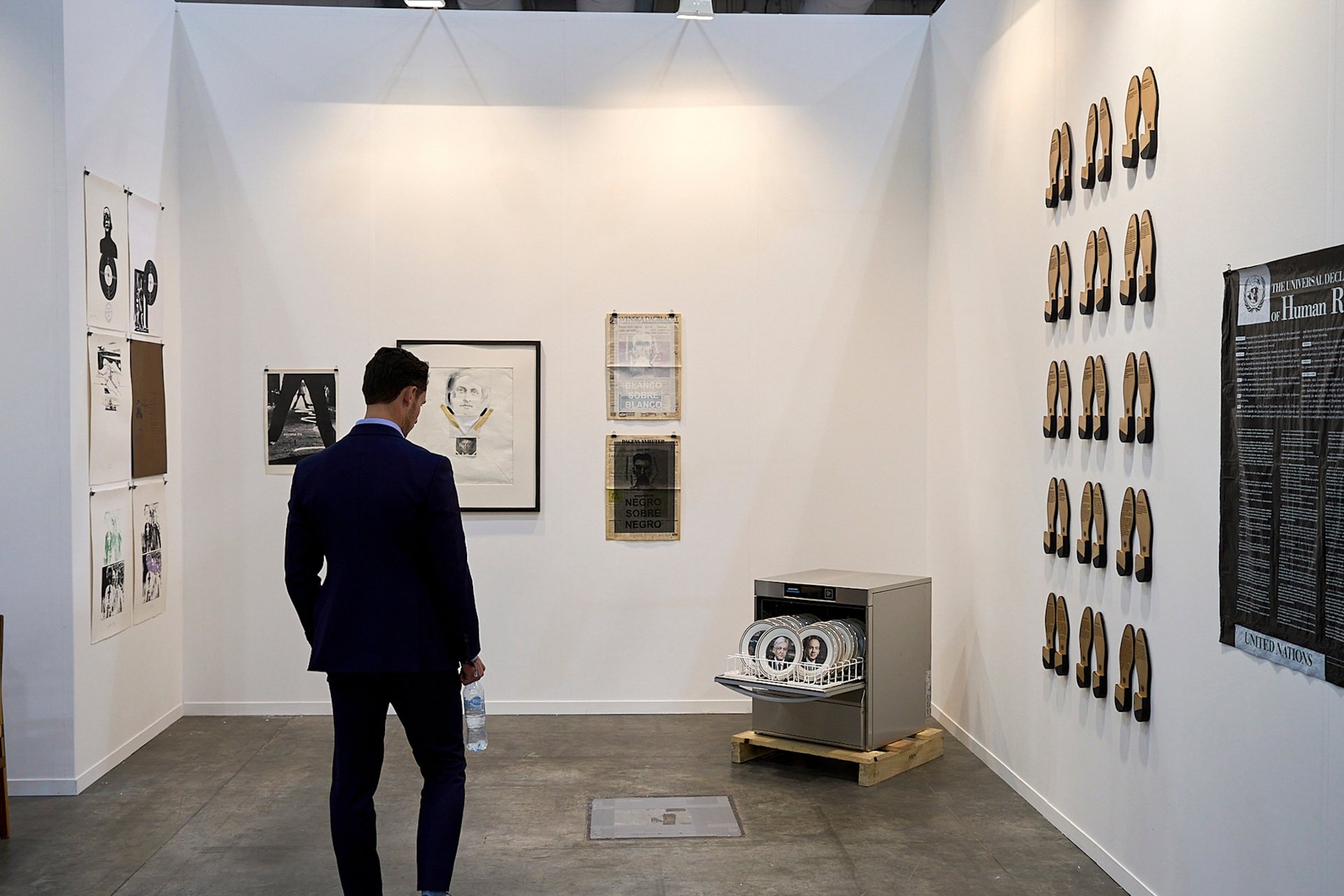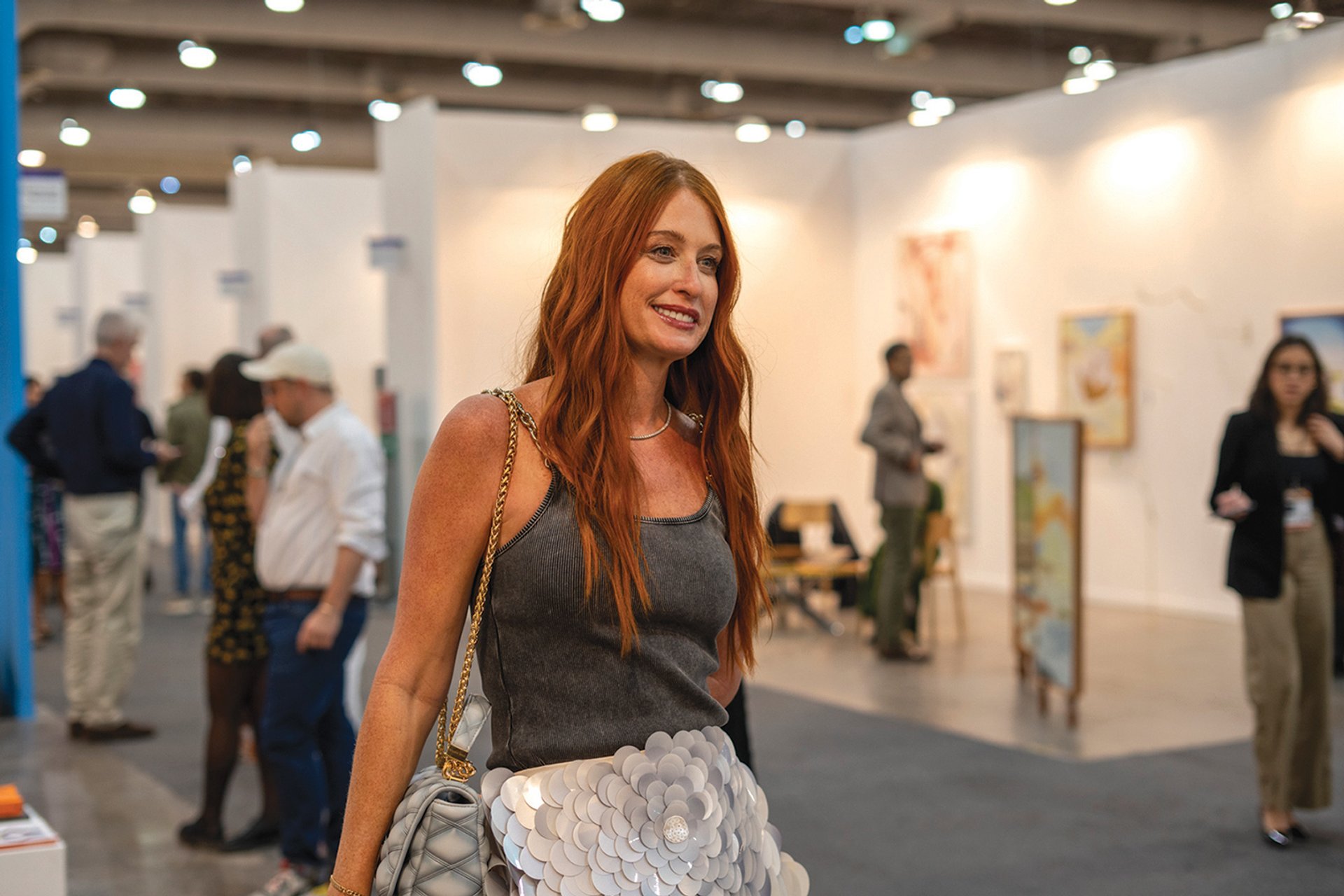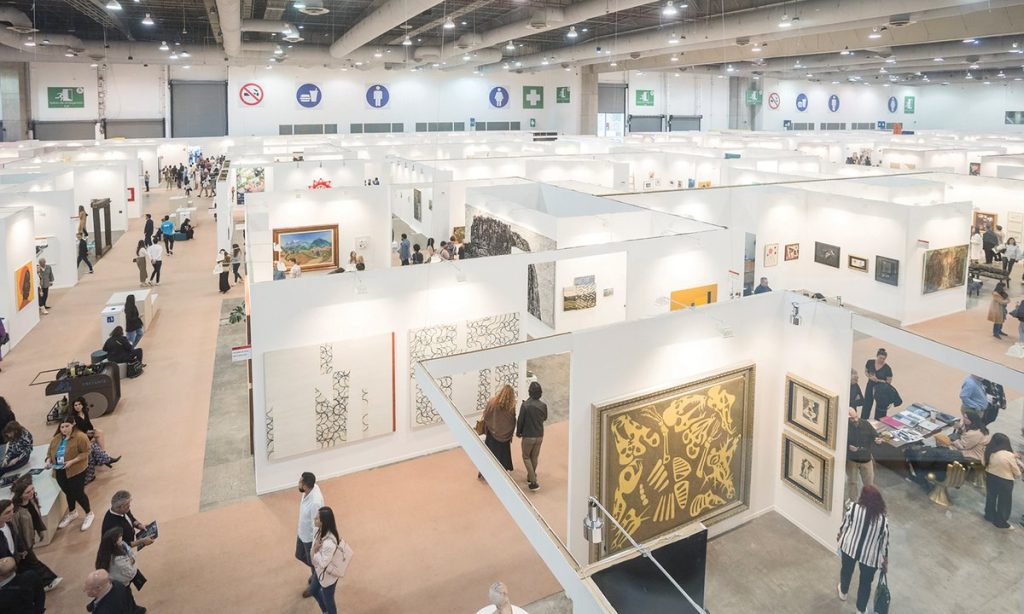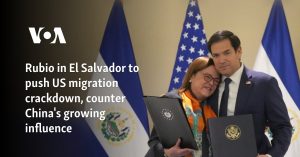There is perhaps no better place to be in early February than Mexico City for the capital’s Art Week. Zona Maco, arguably Latin America’s most important art fair, runs from 5 to 9 February—its satellites Material and Salón Acme take place from 6 to 9 February—drawing collectors from around the country and globe. But this year gallerists will have to contend with US President Donald Trump’s impending import tariffs, combined with a globally lacklustre market, could put a damper on sales.
“Gallerists here are of course very nervous; American collectors are an important part of many galleries’ collector base here,” says José Suro, a Guadalajaran collector and gallerist who runs an arts residency out of his ceramics factory, Cerámica Suro. “The government does not understand and does not want to understand the arts. Institutions here have long since learned to find ways to survive without government support.”
Budget cuts to the culture sector began under austerity measures imposed during Peña Nieto’s presidency in 2017 but worsened considerably during the pandemic when the then president Andrés Manuel López Obrador slashed 75% of the ministry of culture’s operating budget. Claudia Scheinbaum, Mexico’s new president, is not expected to reverse course on this as the government continues to tighten spending in order to reduce the country’s budget deficit. However, an important source of funding for young artists, the Young Creators’ grant funded by the National Endowment for Culture and Arts (Fonca), has remained intact.
Meanwhile, US galleries with outposts in Mexico City, like Morán Morán, Deli Gallery and Commonwealth and Council, all of which closed after less than three years, seemed to overestimate the strength of the market relative to the comparatively cheap operating costs.

A visitor at the 2024 edition of Zona Maco Courtesy Zona Maco
For Monica Manzutto, who, with her husband José Kuri, opened Kurimanzutto, arguably the most influential gallery in Mexico, the secret to Mexico City’s art scene has nothing to do with the market or institutional support. “When we first opened there was no market and no government help either, but there were always collective spaces where people could show art,” Manzutto says. “It’s about collaboration, artists helping artists. In this way, art happens anywhere, no matter what.”
Now, Kurimanzutto has both market and institutional support, with an outpost in New York, a thriving gallery in Mexico City and a new retrospective at Museo Jumex for its longtime artist Gabriel Orozco. Manzutto points to a strong core of young artists and collectives like those highlighted in the Museo Tamayo show OTR*S MUND*S (until 23 February) as evidence of the strength and spirit of the capital’s art scene. Hooogar, a collective of 17 artists and curators, which is included in the show, is an example of the kind of non-hierarchical organisation that can flourish where resources are scarce. Hooogar offers workshops, exhibitions, a film club and more on a tiny budget. The collective has two shows during Art Week, Pensamiento, palabra, obra y omisión in Guadalajara, which focuses on emerging Colombian artists, and TITULO Pendiente in Mexico City, with emerging artists from around Mexico. The collective will also continue its programming at Museo Tamayo and throw a blow-out, not-to-be-missed party.
But even for a resourceful crew like Hooogar, the increasing cost of living in Mexico City since the pandemic is a burden that makes their collective an increasingly rare breed.
Collaborate and experiment
“I moved here nine months ago and I keep hearing how good it is we’re here because the young art scene in Mexico City is dying. There’s no money, no space for young people to run their own projects, they all have to work for someone else,” says Hooogar member Jacaranda Ayala Pineda. “Everything is priced for people earning in dollars.”
It is perhaps no surprise that Hooogar formed in Guadalajara, a cheaper city with more space for collective shows. Hooogar gained its reputation organising exhibitions in semi-abandoned buildings there. But compared with cities like New York and London, where artist-run spaces are increasingly few and far between, Mexico City is still a place where young artists can collaborate and experiment more freely.
Carlos Nuñez—who runs Mimo, an experimental, non-profit space out of the basement of his apartment in New York City—has found kinship with Mexican artists and collectives, including Hooogar. “Despite what I was led to believe, when I visited Mexico City for the first time I never felt like I was in Williamsburg,” Nuñez says, referencing the loss of that Brooklyn neighbourhood’s independent arts spaces amid rapid gentrification. Mimo is showing the Brazilian artist June Canedo de Souza at Salón Acme, which highlights emerging galleries and artists without representation as a part of its Open Call programme.

Zélika García founded the Zona Maco art fair in 2002 Photo: Angel S. Cano
Across the fairs, artists will be presenting experimental, multi-media work that engages with themes of the Anthropocene and the complexities of the digital age. “This year, we’re observing a fascinating convergence of traditional and contemporary practices,” says Zélika García, the founder of Zona Maco. “There’s a notable increase in works that engage with environmental consciousness and digital technologies, while still maintaining strong connections to Latin American artistic traditions.” To that end, Zona Maco will be launching a digital art fair in collaboration with Always Art, a certificate of authenticity service for artists and galleries.
Meanwhile, Salón Acme will feature multi-media work by artists like Diego González Gómez. Work around environmental themes will also be taking centre stage with artists including Gaby Deisolbi, Deepikah RB and Federico Arani.
And despite the recent string of gallery closures in the city, the young dealers Misa Yamaoka and Yuna Cabon could not resist the idea of opening a new gallery, Third Born, in Roma Norte on 7 February. Their first exhibition, Crossing the Chasm, includes the Mexican artists Zazil Barba, Juan Manuel Salaes Valdivia and Marián Roma alongside artists from New York, Paris and New Mexico.
“We want to be careful and not underestimate how saturated the market is,” Yamaoka says. “But we’re hoping that we won’t be totally dependent on a gallery, for-profit model. We’re primarily interested in arts education and want to incorporate some of the funding strategies we’ve learnt about through our time in non-profits.”
- Zona Maco, 5-9 February, Centro Citibanamex, Mexico City








